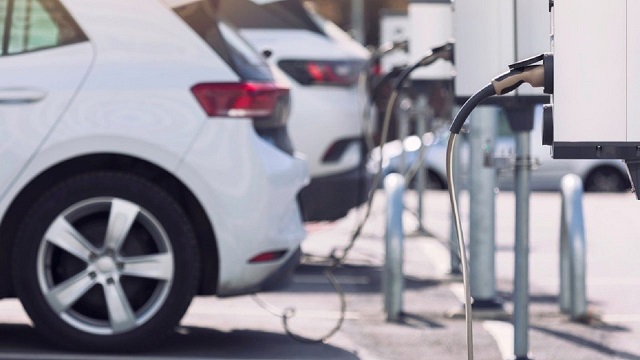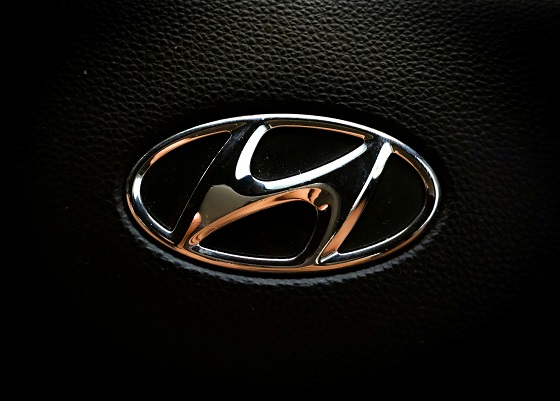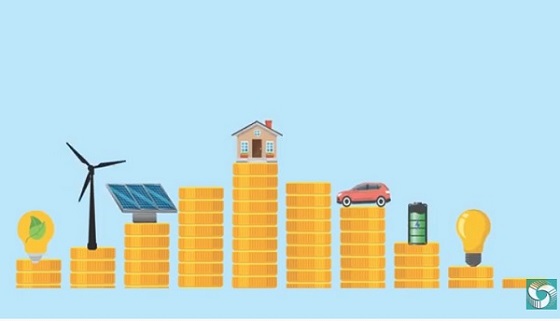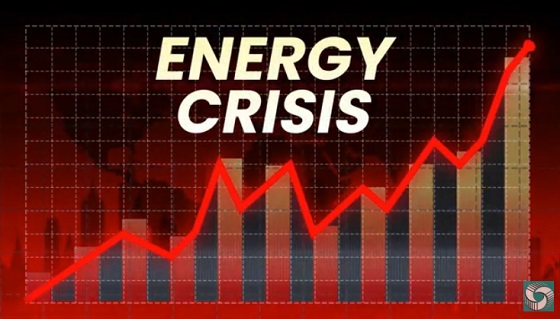Automotive
Do Electric Vehicle Subsidies Work?

From The Audit
Governments in Canada have been begging us to purchase EVs and plug-in hybrids for years. The carrot has been $600 million annually in federal subsidies (and more at the provincial level) aimed at consumers. The stick is the dark threat of outlawing internal combustion engines altogether. A third approach involves splashing billions of dollars of handouts and tax credits in the general direction of companies with starry-eyed plans to manufacture EV components locally.
I’m not going to discuss whether EVs are actually the best solution for whatever ails the environment. That may be a few levels above my pay grade. Instead, I’d like to analyze whether the consumer-focused subsidies actually worked.
To do that I first identified the provinces that offered subsidies for “battery electric vehicles” (i.e., EVs). Those would be British Columbia, Quebec, New Brunswick, Prince Edward Island, Nova Scotia, and Newfoundland. That’ll give us a nice reference point for comparison against provinces that don’t offer subsidies. Specifically, those are Alberta, Saskatchewan, Manitoba, and Ontario. (Although Manitoba did just introduce a rebate program in July of 2024.)
Of course, there are also federal subsidies available across the country.
Now there is one problem with the Statistics Canada sales data. Due to some weird licensing issue, there’s no sales data at all for Newfoundland, Nova Scotia, or Alberta. We’ll just have to do our best with what we’ve got.
Here are the numbers expressed as sales per 100,000 people (based on 2024 provincial population estimates):

The obvious big mover here is Quebec. Their Roulez Vert program – at $7,000 – is the most generous in the country (although it’s currently set to be phased-out by 2027). But Roulez Vert has been around since 2012, so it might not completely explain those huge jumps since 2022.
If you squint really hard at the graph, you should notice a modest jump in Ontario EV sales back in 2018. That would probably be due to last-minute bargain hunters reacting to the Ford government’s plans to cancel Ontario’s rebate.
But none of that is going to give us the precision we need to answer our real question: did government subsidies actually drive more EV sales? For that, we’ll need a bit of statistical analysis. This scatter plot visualizes the relationships between subsidies and average sales over time:

If our only data point was Quebec – with its impressive sales and high subsidy level – then the conclusion would be straightforward. But that’s exactly why we look for more data. So, for instance, BC has sales that, proportionally, were close to Quebec’s but with rebates that were 40 percent lower. And Canada’s federal rebates played a role in relatively few overall sales.
For those of you who enjoy such things, here are the actual numbers SciPy’s linear regression gave me:
Slope: 0.005910745672259122 Intercept: 13.256019105900187 R-squared: 0.31881294222441453 P-value: 0.14480378835260208 Standard Error: 0.00352721449117312
The slope indicates that for every additional thousand dollars of subsidy, EV sales would increase by only around six vehicles per 100,000 people. That’s compared with the intercept (13.26) which estimates the baseline (no-subsidy) sales at 13.26 units per 100,000 people.
The R-squared value suggests that about 32 percent of the variability in EV sales per 100,000 people is explained by the subsidy amount. But the P-value strongly suggests that the relationship is not statistically significant.
Meaning, in other words, that there’s no clear cause-and-effect relationship between the billions of dollars of government handouts and real-world vehicle sales. It’s distinctly possible that just as many EVs would have been purchased had there been no subsidies.
Automotive
Canadians’ Interest in Buying an EV Falls for Third Year in a Row

From Energy Now
Electric vehicle prices fell 7.8 per cent in the last quarter of 2024 year-over-year, according to the AutoTader price index
Fewer Canadians are considering buying an electric vehicle, marking the third year in a row interest has dropped despite lower EV prices, a survey from AutoTrader shows.
Forty-two per cent of survey respondents say they’re considering an EV as their next vehicle, down from 46 per cent last year. In 2022, 68 per cent said they would consider buying an EV.
Meanwhile, 29 per cent of respondents say they would exclusively consider buying an EV — a significant drop from 40 per cent last year.
The report, which surveyed 1,801 people on the AutoTrader website, shows drivers are concerned about reduced government incentives, a lack of infrastructure and long-term costs despite falling prices.
Electric vehicle prices fell 7.8 per cent in the last quarter of 2024 year-over-year, according to the AutoTader price index.
The survey, conducted between Feb. 13 and March 12, shows 68 per cent of non-EV owners say government incentives could influence their decision, while a little over half say incentives increase their confidence in buying an EV.
Automotive
Hyundai moves SUV production to U.S.

 MxM News
MxM News
Quick Hit:
Hyundai is responding swiftly to 47th President Donald Trump’s newly implemented auto tariffs by shifting key vehicle production from Mexico to the U.S. The automaker, heavily reliant on the American market, has formed a specialized task force and committed billions to American manufacturing, highlighting how Trump’s America First economic policies are already impacting global business decisions.
Key Details:
-
Hyundai has created a tariffs task force and is relocating Tucson SUV production from Mexico to Alabama.
-
Despite a 25% tariff on car imports that began April 3, Hyundai reported a 2% gain in Q1 operating profit and maintained earnings guidance.
-
Hyundai and Kia derive one-third of their global sales from the U.S., where two-thirds of their vehicles are imported.
Diving Deeper:
In a direct response to President Trump’s decisive new tariffs on imported automobiles, Hyundai announced Thursday it has mobilized a specialized task force to mitigate the financial impact of the new trade policy and confirmed production shifts of one of its top-selling models to the United States. The move underscores the gravity of the new 25% import tax and the economic leverage wielded by a White House that is now unambiguously prioritizing American industry.
Starting with its popular Tucson SUV, Hyundai is transitioning some manufacturing from Mexico to its Alabama facility. Additional consideration is being given to relocating production away from Seoul for other U.S.-bound vehicles, signaling that the company is bracing for the long-term implications of Trump’s tariffs.
This move comes as the 25% import tax on vehicles went into effect April 3, with a matching tariff on auto parts scheduled to hit May 3. Hyundai, which generates a full third of its global revenue from American consumers, knows it can’t afford to delay action. Notably, U.S. retail sales for Hyundai jumped 11% last quarter, as car buyers rushed to purchase vehicles before prices inevitably climb due to the tariff.
Despite the trade policy, Hyundai reported a 2% uptick in first-quarter operating profit and reaffirmed its earnings projections, indicating confidence in its ability to adapt. Yet the company isn’t taking chances. Ahead of the tariffs, Hyundai stockpiled over three months of inventory in U.S. markets, hoping to blunt the initial shock of the increased import costs.
In a significant show of good faith and commitment to U.S. manufacturing, Hyundai last month pledged a massive $21 billion investment into its new Georgia plant. That announcement was made during a visit to the White House, just days before President Trump unveiled the auto tariff policy — a strategic alignment with a pro-growth, pro-America agenda.
Still, the challenges are substantial. The global auto industry depends on complex, multi-country supply chains, and analysts warn that tariffs will force production costs higher. Hyundai is holding the line on pricing for now, promising to keep current model prices stable through June 2. After that, however, price adjustments are on the table, potentially passing the burden to consumers.
South Korea, which remains one of the largest exporters of automobiles to the U.S., is not standing idle. A South Korean delegation is scheduled to meet with U.S. trade officials in Washington Thursday, marking the start of negotiations that could redefine the two nations’ trade dynamics.
President Trump’s actions represent a sharp pivot from the era of global corporatism that defined trade under the Obama-Biden administration. Hyundai’s swift response proves that when the U.S. government puts its market power to work, foreign companies will move mountains — or at least entire assembly lines — to stay in the game.
-

 2025 Federal Election2 days ago
2025 Federal Election2 days agoStudy links B.C.’s drug policies to more overdoses, but researchers urge caution
-

 2025 Federal Election2 days ago
2025 Federal Election2 days agoCarney’s Hidden Climate Finance Agenda
-

 Business2 days ago
Business2 days agoIs Government Inflation Reporting Accurate?
-

 2025 Federal Election2 days ago
2025 Federal Election2 days agoWhen it comes to pipelines, Carney’s words flow both ways
-

 2025 Federal Election2 days ago
2025 Federal Election2 days agoPolls say Canadians will give Trump what he wants, a Carney victory.
-

 2025 Federal Election1 day ago
2025 Federal Election1 day agoThe Anhui Convergence: Chinese United Front Network Surfaces in Australian and Canadian Elections
-

 2025 Federal Election19 hours ago
2025 Federal Election19 hours agoPoilievre Campaigning To Build A Canadian Economic Fortress
-

 Automotive19 hours ago
Automotive19 hours agoCanadians’ Interest in Buying an EV Falls for Third Year in a Row







